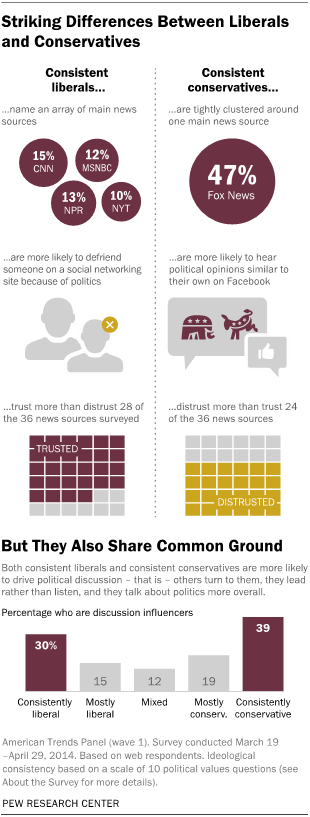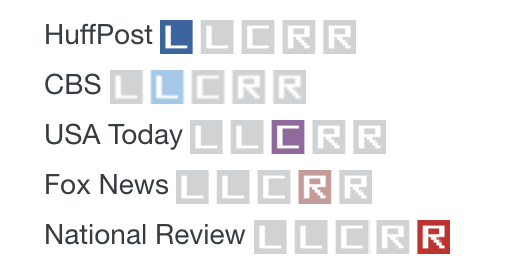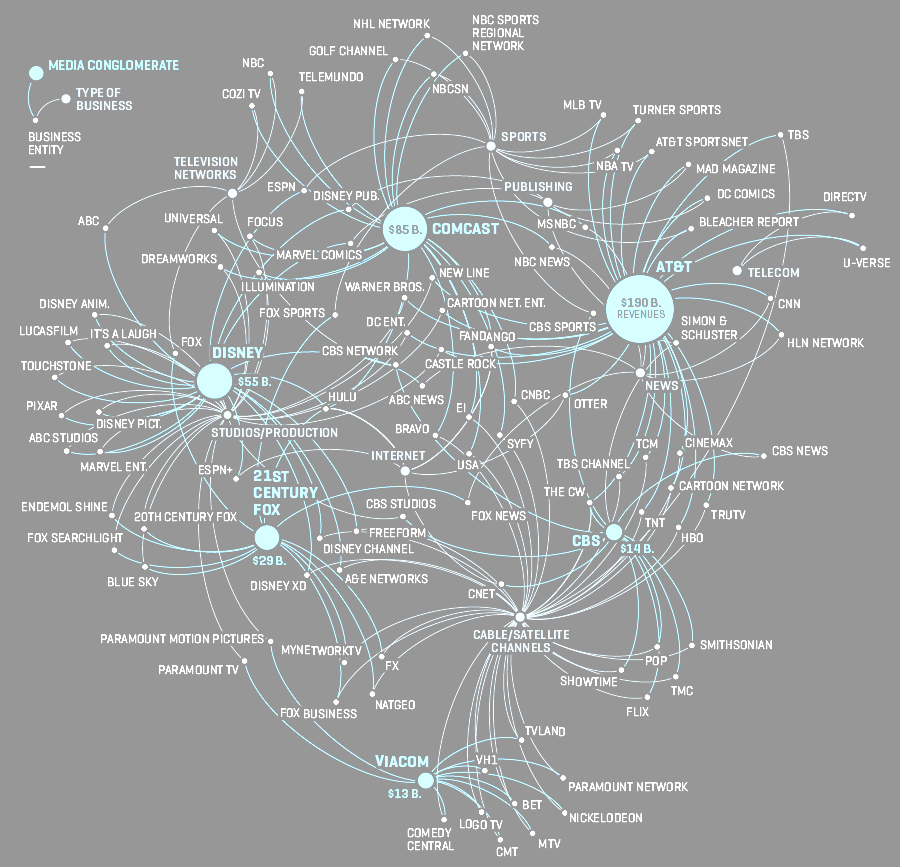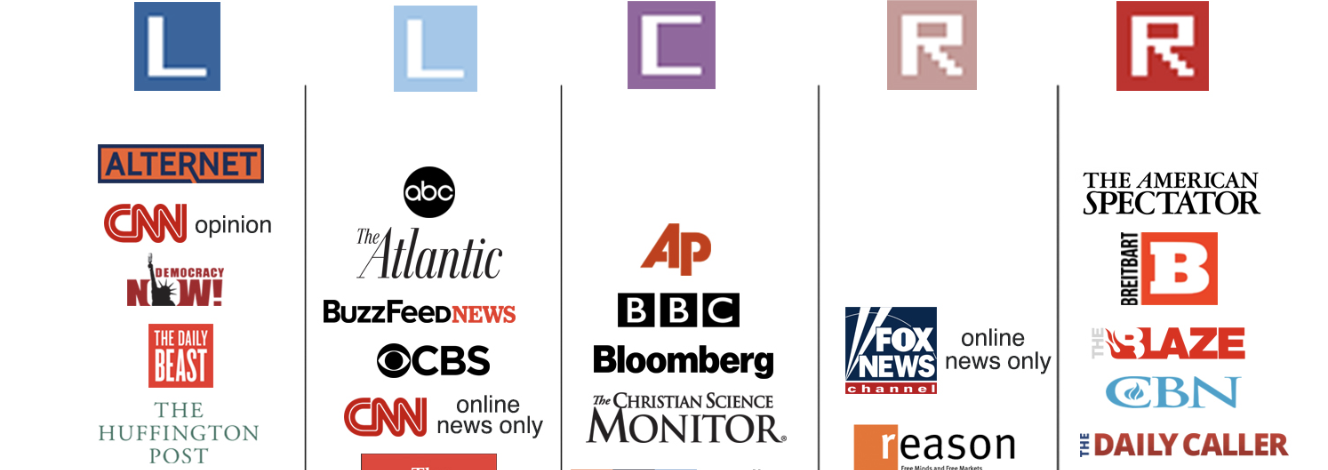Lateral readers don’t spend time on the page or site until they’ve first gotten their bearings by looking at what other sites and resources say about the source at which they are looking.
—Mike Caulfield, Chapter 16
Move 3: read laterally
Move 2, going upstream, teaches you how to hold sources accountable by looking up the info they’ve presented to you via links or names of other sources. This is helpful for establishing consensus and, when used in tandem with Move 3 — reading laterally — you can evaluate how credible such sources are. That said, reading laterally works by going “across many connected sites instead of digging deep into the site at hand.”
What does this mean? Why is it important?
Filter bubbles
After Trump was elected in November 2016, Saturday Night Live ran this satirical ad of a planned community called “The Bubble”:
The ad poked fun of the privileged position that hipsters, progressives, or white millennials can choose to close themselves off from a version of America that threatens their worldview (they jokingly call it “Brooklyn”). It’s a funny skit because it plays off some of the fundamental trouble with a networked view of reality.
The concept of the “bubble” actually draws from tech guru Eli Pariser, who gave this famous TED Talk on filter bubbles back in 2011 and published a book about them soon after:

Since Pariser’s talk 8 years ago, information has become even more filtered. For example, a 2014 Pew Study found that there are key differences between folks on the left and the right of the political spectrum (see image on the right). While Facebook is an echo chamber for consistent conservatives, consistent liberals are likely to de-friend people who disagree with them politically. Moreover, while consistent liberals have a more diverse media diet, conservatives distrust the news and hence, mostly stick to Fox News for their information. At the same time, Pew found that there’s a huge cohort of people (46% of those) whose politics are more mixed; those folks tend to listen — rather than speak — when it comes to politics online; in other words, they tend to be influenced by their filter bubbles rather than contribute to them.
Assessing media bias with AllSides
In Chapter 17, Caulfield uses Wikipedia’s criteria for defining reliable sources, which he suggests are based on three primary characteristics:
- Process. The source has a method of insuring or verifying that the information it presents is accurate and reliable and it shares it with its audiences.
- Expertise. The source has a trackable, traceable history of knowledge with the subject at hand as an expert, credentialed professional, or via proximity to the information in ways that excludes laypersons.
- Aim. The source has an incentive to present the best possible information to you in the pursuit of truth or for the purpose of establishing consensus.
Activity #1: Some sites help us read laterally by examining the credibility of other news sources for us. AllSides is one such site. Take a moment to look at this site. Then read laterally by looking for information about AllSides from other sources. Who are these sources and what have they said about them? Do you think AllSides is reliable? Add your notes here.

Activity #2: Explore how the circulation of info travels within political bubbles that can be identified using media bias tools at AllSides.
- In a moment I’ll assign you a bias designation from AllSides (Left, Lean Left, Center, Lean Right, Right). Once I do, take a look at how AllSides defines this. What does it mean to be “leaning left” for example? Add your notes here.
- Now go to the Media Bias Rating page on AllSides and locate 3-4 news sources from their rating chart that also match your color. For instance if you chose “Left,” you are looking for any source listed that has darker blue “L” next to it, far left of the key.
- As you look at these 3-4 sources, make a list of some common themes, stories, subjects, or topics. These can be loose or specific. It is up to you to decide how to find these commonalities and how you want to track them.
- Finally, compose a summary for one of the common themes or topic or story. Be ready to share it with the group.

Homework for Friday Group Conferences
[Note: it might be a really good idea to re-read/study Chapters 16-17 of Caulfield on reading laterally before doing this.]
FC#3: Read laterally by “looking at what other sites and resources say about [a] source.” To practice this, check the credibility of one of the sources listed on AllSides; Media Bias Rating Chart. After doing this, decide if you agree or disagree with the rating on the site.

As you write your post, you should read the site, but more importantly discuss what other sources say about it. You might start with Wikipedia. And find what other sites or resources say about these sites using Google searches, use their criteria (which Caulfield outlines in Chapter 17) — process, expertise, and aim — to guide your observations.
What do other sources say, for example, about Breitbart’s research process or how they correct mistakes? What do other sources say about the kinds of writers Alternet use for their stories? Are they experts? Do they interview experts? What incentive does The Daily Caller have to get things right in their broadcasts? Who do they cater to? Feel free to look at your chosen site, but what you’re really doing is investigating and assessing their trustworthiness.
Finally, be sure to note whether you agree or disagree with Community feedback rating on AllSides.
Homework for Monday
Read Chapters 20-25 of Web Literacy for Student Fact-Checkers, which is tells you how to read laterally about recent studies.

